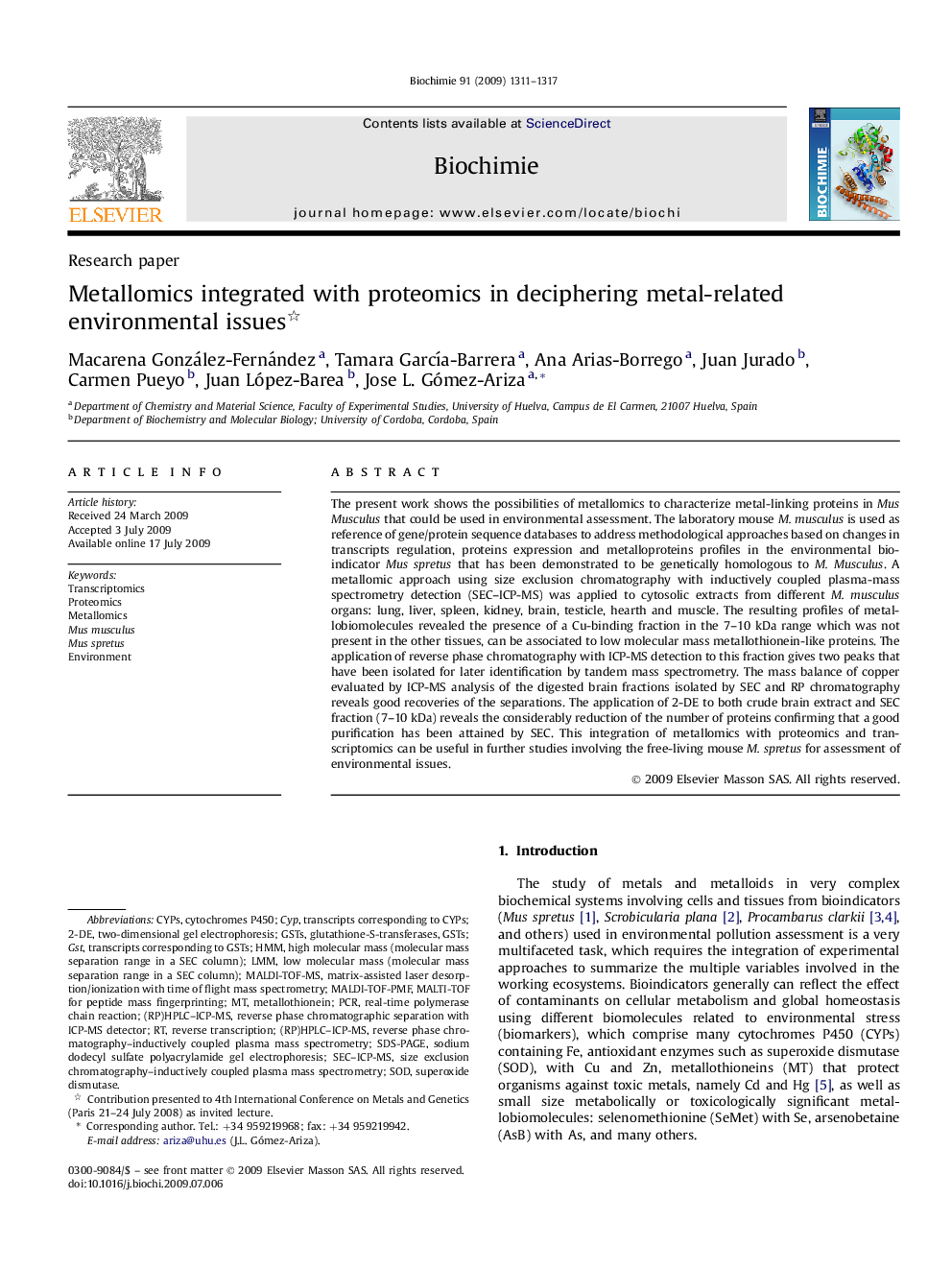| Article ID | Journal | Published Year | Pages | File Type |
|---|---|---|---|---|
| 1952403 | Biochimie | 2009 | 7 Pages |
The present work shows the possibilities of metallomics to characterize metal-linking proteins in Mus Musculus that could be used in environmental assessment. The laboratory mouse M. musculus is used as reference of gene/protein sequence databases to address methodological approaches based on changes in transcripts regulation, proteins expression and metalloproteins profiles in the environmental bioindicator Mus spretus that has been demonstrated to be genetically homologous to M. Musculus. A metallomic approach using size exclusion chromatography with inductively coupled plasma-mass spectrometry detection (SEC–ICP-MS) was applied to cytosolic extracts from different M. musculus organs: lung, liver, spleen, kidney, brain, testicle, hearth and muscle. The resulting profiles of metallobiomolecules revealed the presence of a Cu-binding fraction in the 7–10 kDa range which was not present in the other tissues, can be associated to low molecular mass metallothionein-like proteins. The application of reverse phase chromatography with ICP-MS detection to this fraction gives two peaks that have been isolated for later identification by tandem mass spectrometry. The mass balance of copper evaluated by ICP-MS analysis of the digested brain fractions isolated by SEC and RP chromatography reveals good recoveries of the separations. The application of 2-DE to both crude brain extract and SEC fraction (7–10 kDa) reveals the considerably reduction of the number of proteins confirming that a good purification has been attained by SEC. This integration of metallomics with proteomics and transcriptomics can be useful in further studies involving the free-living mouse M. spretus for assessment of environmental issues.
